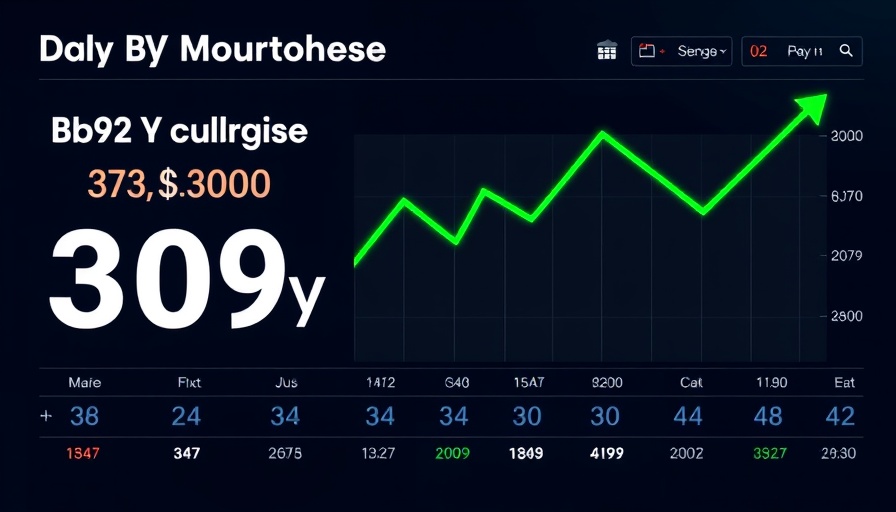
Mortgage Rates Hold Steady: What It Means for Potential Homebuyers
Amid a backdrop of minimal fluctuation, mortgage rates have recently been reported at an average of 6.34%, a decrease that is technically lower than the previous day yet effectively negligible for the average borrower. This slight drop of 0.01% is so minimal that it is unlikely to impact consumer decisions significantly. In a market where home affordability remains a pressing concern, even such minor adjustments could influence homeowner strategy.
Government Shutdown Impacts and Market Sentiment
Currently, the U.S. federal government shutdown complicates the economic landscape, leaving critical reports, such as the jobs report set for release, in limbo. Such data is essential for gauging economic health and future rate adjustments. Experts believe that while rates may not see significant movement now, volatility could resurface once government operations resume and relevant data is released, providing clearer indications of market trends.
Understanding the Importance of Economic Indicators
Alongside the jobs report, other economic indicators like the ISM Services Index will serve as crucial benchmarks for market observers. As these reports are released, they can shift the dynamics of mortgage lending and borrowing rates, allowing both lenders and borrowers to make informed decisions. For prospective homebuyers, timing is critical; understanding the importance of these indicators may lead to optimal purchasing strategies.
Hints of Future Trends: What Lies Ahead for Mortgage Rates?
Forecasting future mortgage rates will require an analysis of upcoming economic data in conjunction with current market conditions. Analysts predict that once government activities resume, new data could redefine the prospects for rates, potentially leading to decreased or increased rates depending on the labor market's resilience and economic recovery indicators. Homebuyers are advised to keep a close eye on these developments to take full advantage of market conditions.
Strategies for Homebuyers in a Stagnant Market
For homebuyers navigating these uncertain waters, it is advisable to consider locking in rates now rather than waiting for further drops, which may not materialize. Additionally, understanding the broader financial landscape can empower buyers to make strategic decisions. Connecting with knowledgeable mortgage brokers who can provide personalized insights and advice tailored to individual circumstances is essential in this staunchly competitive and fragmented market.
The Psychological Impact of Rate Changes on Purchasing Decisions
Finally, the psychological aspect of mortgage rates cannot be overlooked. Even minimal changes in rates can influence buyer sentiment, potentially leading to abandoned plans or delayed purchases based on perceived affordability. Understanding the emotional component of these financial decisions, coupled with strategic planning, may be key for homebuyers in a constantly fluctuating market.
As mortgage rates hover at historic highs yet demonstrate slight shifts, the overarching advice remains to stay informed and prepared. Whether you are a first-time homebuyer or looking to refinance, understanding the mechanics behind these fluctuations and maintaining an alert and strategic approach will empower you to navigate this complicated landscape effectively.
 Add Row
Add Row  Add
Add 




Write A Comment